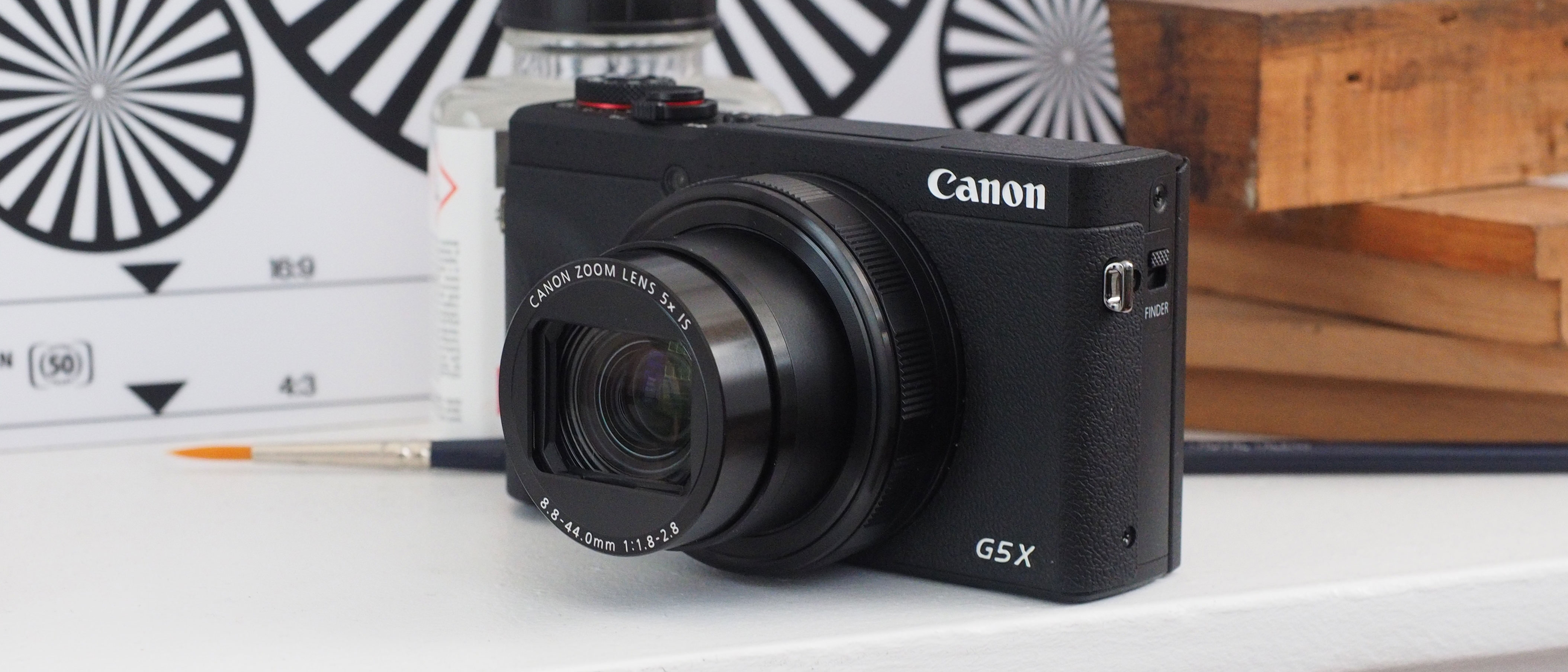Digital Camera World Verdict
On paper, the new PowerShot G5 X Mark II isn’t just a pocket-sized powerhouse of a camera, it’s both more powerful and more practical than its predecessor, the original G5 X. It’s smaller, it has a longer 5x zoom lens and adds 4K video capture with no crop factor. But has Canon paid too much attention to power and portability at the expense of everything else?
Pros
- +
Improved 5x zoom lens
- +
Pocketable dimensions
- +
Powerful 4K video capture
Cons
- -
No mic socket
- -
Pop-up EVF could be tiresome
- -
Lacklustre fine detail
Why you can trust Digital Camera World
The Canon PowerShot G5 X Mark II has been launched at the same time as the Canon PowerShot G7 X Mark III, and comes with the same new ‘stacked’ CMOS sensor and DIGIC 8 processor, to allow a step-change in video recording capabilities, up from full HD to 4K, plus improved high-ISO performance, and an unusual fully-automatic 30fps burst mode which captures images in Canon’s own highly efficient CR3 RAW format.
This push towards speed, power and processing reminds us of Sony's continued evolution of its tiny but expensive RX100 series cameras. And that's not the only feature of the new G5 X Mark II that has a Sony echo about it. Wait till we get to the viewfinder.
The G5 X also has a new 5x zoom lens, which is both longer than the lens on the original PowerShot G5 X, with a new maximum 120mm equivalent focal length, but also offers a fast f/1.8 aperture at the widest zoom setting which only drops to f/2.8 even at full zoom. Its lens alone makes the G5 X Mark II look like it could potentially be one of the best compact cameras to buy right now, and its 1-inch sensor gives it an instant advantage in image quality over regular point and shoot cameras and even the best camera phones.
Other notable features in this new camera include in-built focus bracketing (up to 100 shots), in-camera panoramas at full resolution and revised user interface that offers a very similar look and feel to Canon’s own EOS cameras – Canon says that its premium Powershot models like this one are often chosen as ‘second’ cameras by EOS fans. With that in mind, Canon has also updated the Picture Styles to more accurately reflect the ones on its DSLR cameras.
Other popular Canon PowerShots:
• Canon PowerShot SX740 HS review
• Canon PowerShot SX70 HS review

Specifications
Sensor: 20.1MP 1-in stacked CMOS
Image processor: DIGIC 8
AF points: 31-point contrast AF
ISO range: 125 to 12,800 (exp. 25,600)
Max image size: 5,472 x 3,648
Metering modes: Evaluative, centre-weighted, spot
Video: 4K UHD at 30p, 25p
Viewfinder: Pop-up EVF
Memory card: SD/SDHC/SDXC (UHS I)
LCD: 3-inch tilting touchscreen, 1.04m dots
Max burst: 30fps (full auto)
Connectivity: Wi-Fi, Bluetooth
Size: 110.9 x 60.9 x 46mm
Weight: 340g (body only, with battery and SD card)
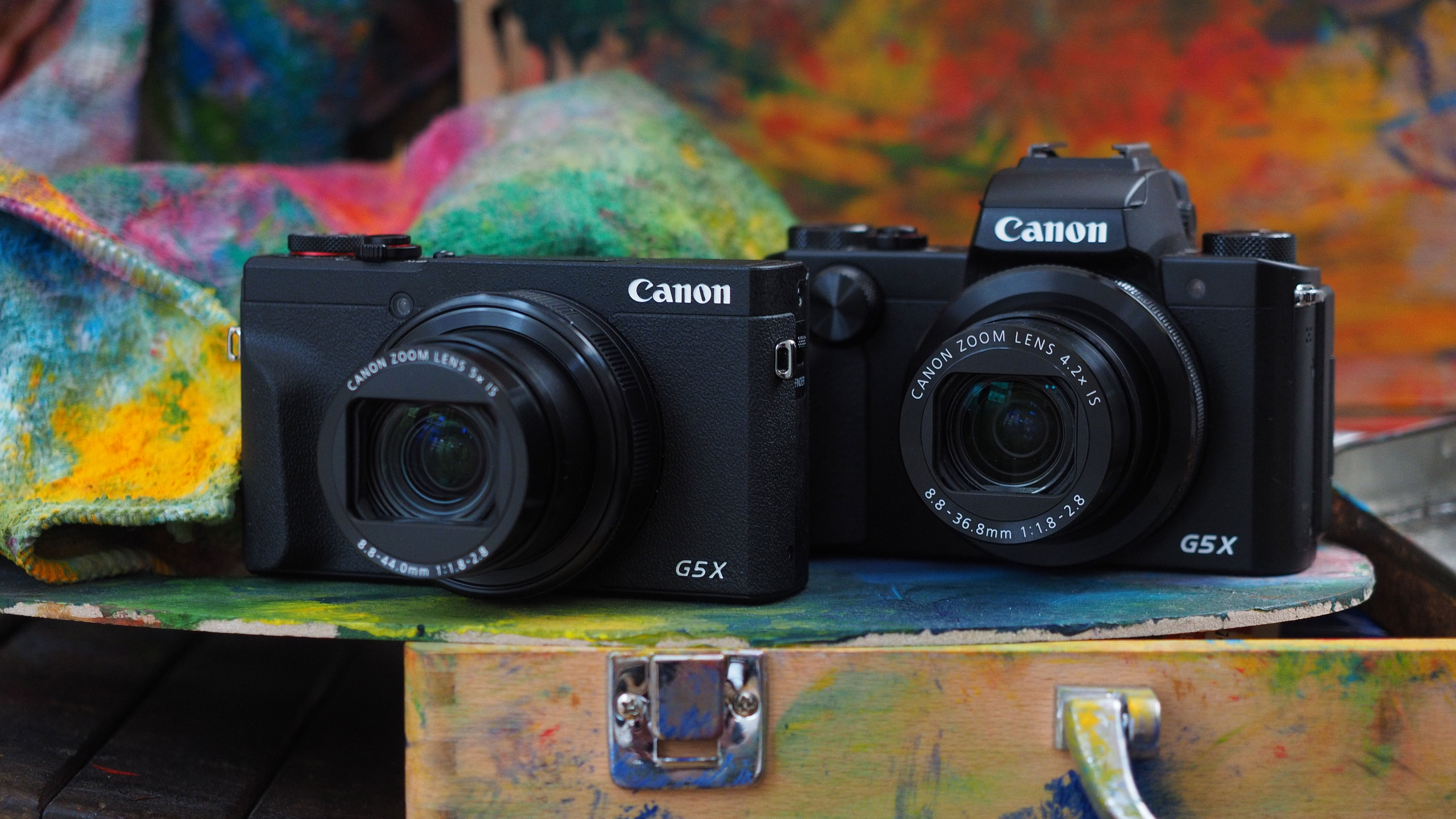
Build and handling
The original PowerShot G5 X had a rather appealing ‘micro-DSLR’ design which included an electronic viewfinder in a housing on the top of the camera. The new G5 X Mark II is very different. The viewfinder housing has gone and the EVF is now incorporated into the body via the pop-up/slide-out arrangement first used by Sony on its RX100 series cameras.
This has allowed a smaller, neater, rectangular body design that means the new model is much more pocketable than the old one – on the other hand, it has lost a lot of the character and charm of the original design, even if it is more practical. Hmm.
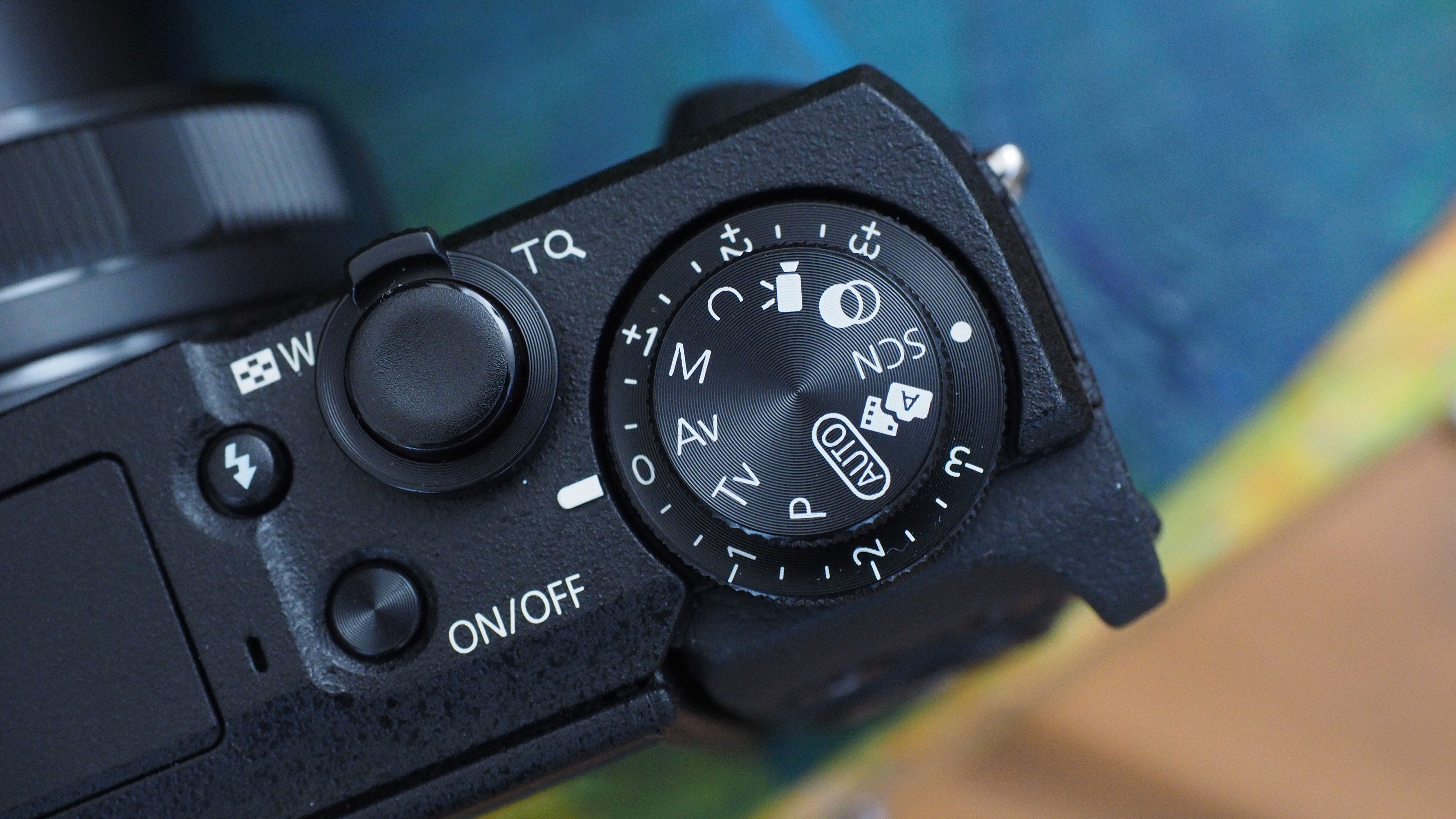
The new G5 X Mark II looks very similar to the G7 Mark III launched at the same time, which we were told is deliberate. The control layout and external appearance is very similar and you have to look closely to tell which is which.
The retracting viewfinder does keep the camera shape more compact, but it does feel a bit of a drag having to pop it up and then slide out the eyepiece before you can use it. It’s not the highest resolution EVF on the market with 2.36 million dots, but it’s sharp and clear and does the job.
We do like the overall feeling of quality, the ‘stacked’ mode dial and EV compensation dial and the customisable lens control ring. This is a small camera, though, and inevitably this affects its everyday usability. A camera that fits in your pocket is a great idea, but if you don't enjoy shooting with it, that's where it's likely to stay.
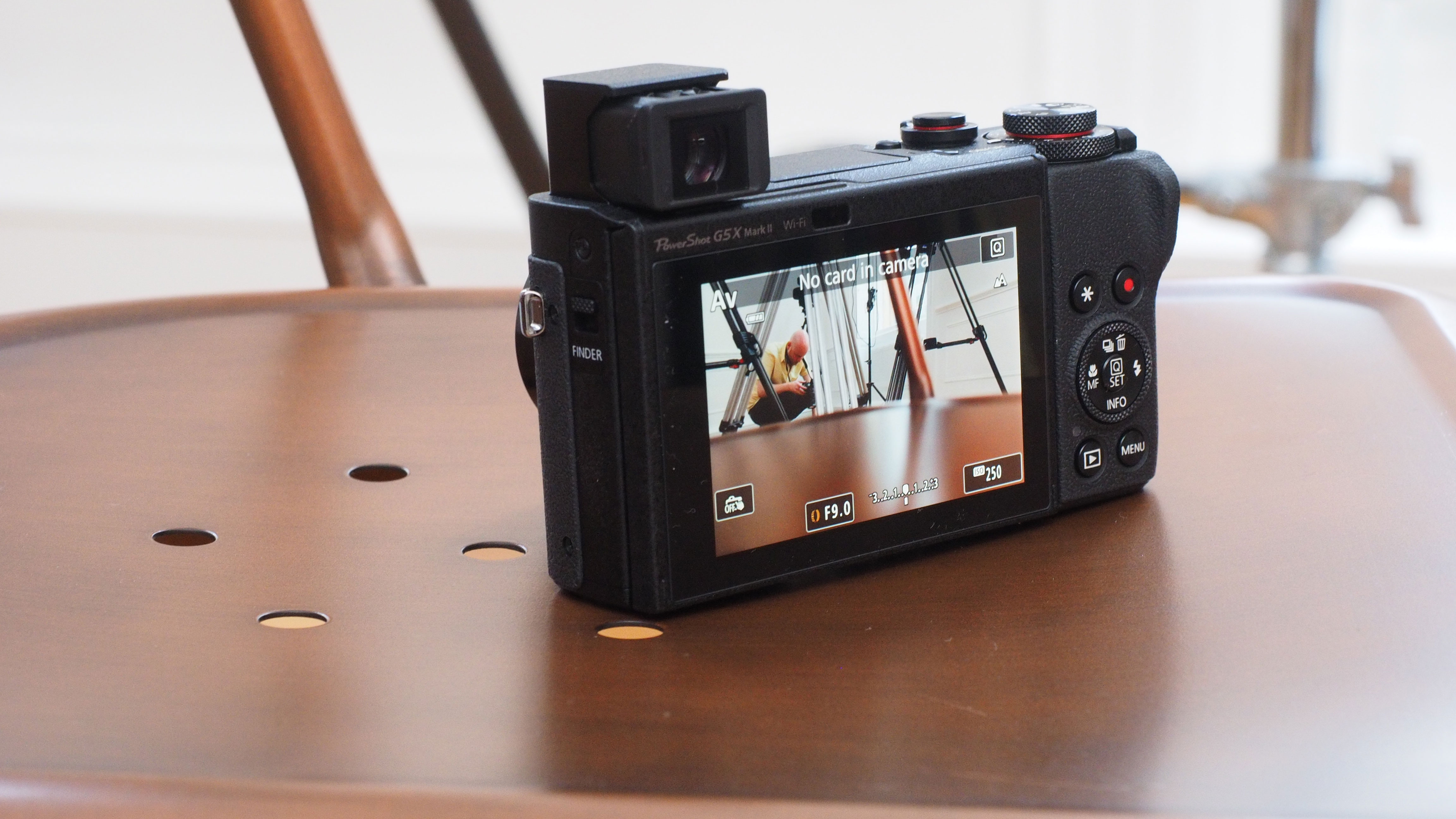
Performance
The PowerShot G5 X Mark II uses the same sensor, processor and autofocus system as the G7 X Mark III, and feels very similar to use, with fast and positive AF at normal focus distances and zoom settings, and especially rapid and effective face detection.
The image quality is less impressive. The G5 X Mark II has a 1-inch sensor, which is a good deal larger than the average compact camera sensor and half way to the size of a DSLR or mirrorless camera, so we were expecting clean, sharp results. But while the colours in our test shots were natural-looking, punchy and saturated and the exposures were generally very well balanced, the fine detail was less impressive.





It was disappointing to see the same kind of smoothed-over noise-reduction we’re used to seeing in smartphones and point and shoot compacts, but not in a premium compact camera. It’s much less obvious, to be fair, but it’s there nonetheless. When you zoom in and compare the G5 X Mark II’s fine detail rendition to that of an APS-C camera, the distinct smoothing effect in finely textured detail is disappointing – as is the fairly crude image sharpening, which can leave fine halos around some objects. Megapixels aren't everything.
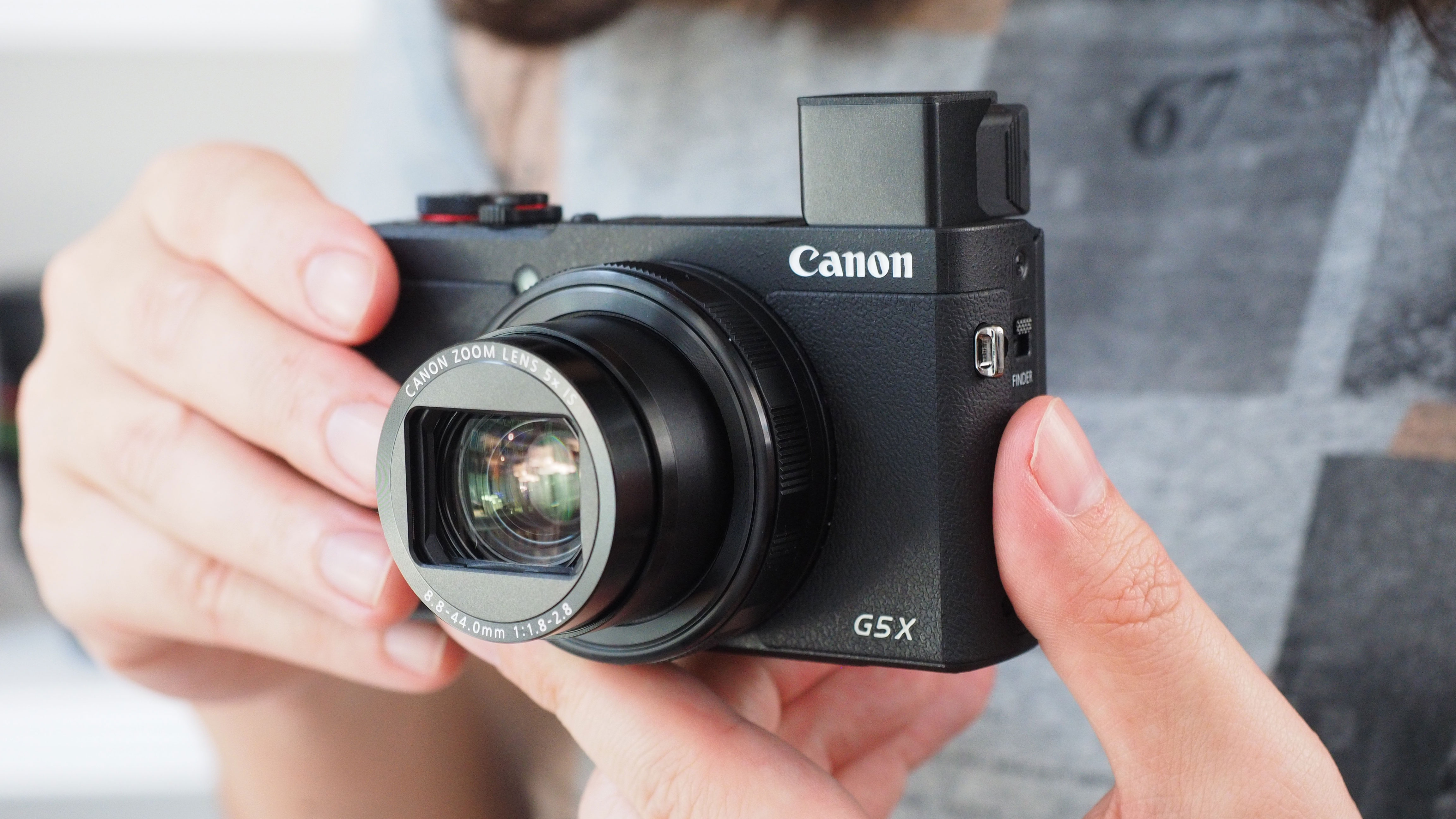
Early verdict
The new Canon PowerShot G5 X Mark II is certainly smaller and more powerful than its predecessor. It now has a longer-range 5x zoom lens, a more compact design thanks to its pop-up EVF and far more powerful 4K video shooting capability. But was Canon wise to leave out a mic socket? In an age of keen vloggers and content creators, this feels like a mistake. Canon will point out that the cheaper G7 X Mark III does have a mic socket – but this camera doesn't have a viewfinder, so it feels like you're being asked to make a choice you shouldn't have to make.
The PowerShot G5 X Mark II is an interesting and powerful pocket camera for keen photographers and videographers, but it's not cheap and it's not perfect for either stills or video. The G5 X Mark II ticks a lot of boxes, but they're not very strong ticks.
Read more:
• The best point and shoot cameras to get right now
• The best Canon cameras, from PowerShot to EOS
• These are the best cameras for vlogging

Rod is an independent photography journalist and editor, and a long-standing Digital Camera World contributor, having previously worked as DCW's Group Reviews editor. Before that he has been technique editor on N-Photo, Head of Testing for the photography division and Camera Channel editor on TechRadar, as well as contributing to many other publications. He has been writing about photography technique, photo editing and digital cameras since they first appeared, and before that began his career writing about film photography. He has used and reviewed practically every interchangeable lens camera launched in the past 20 years, from entry-level DSLRs to medium format cameras, together with lenses, tripods, gimbals, light meters, camera bags and more. Rod has his own camera gear blog at fotovolo.com but also writes about photo-editing applications and techniques at lifeafterphotoshop.com
